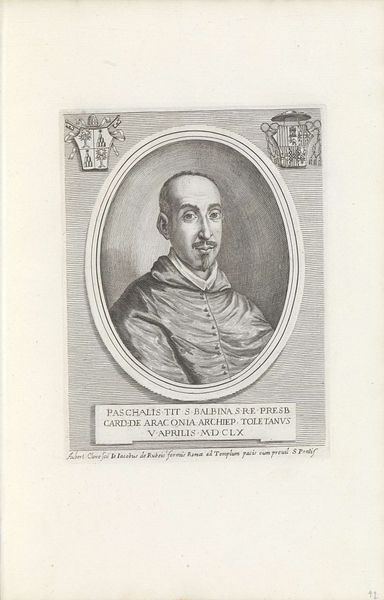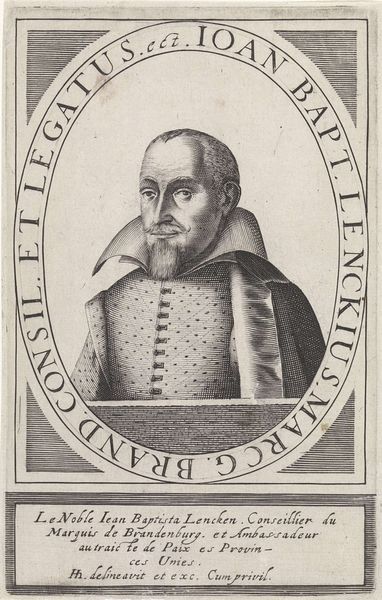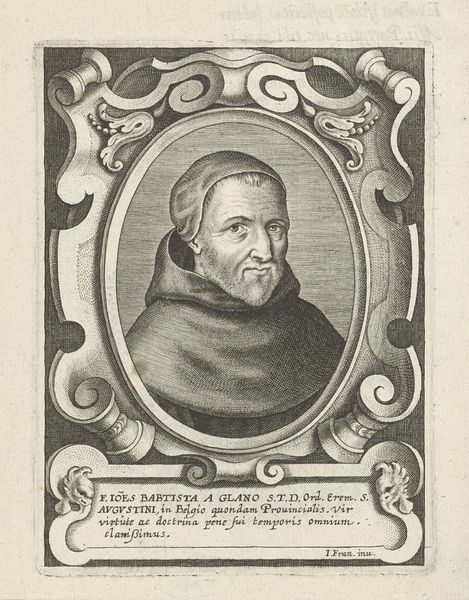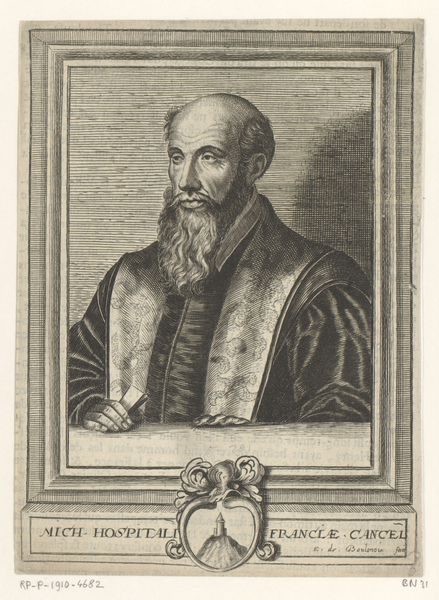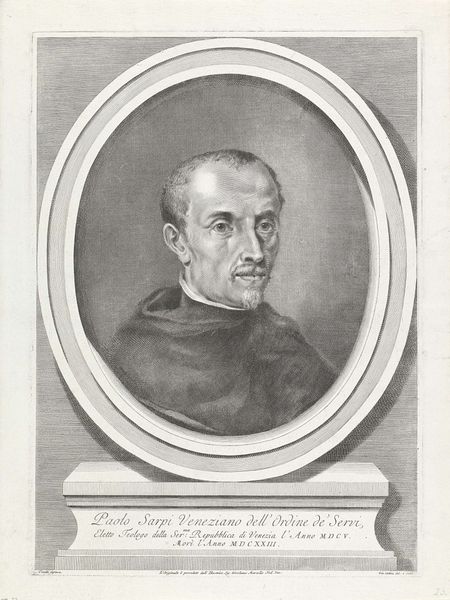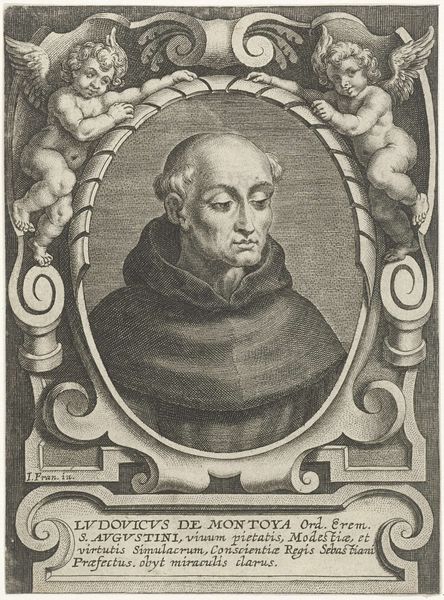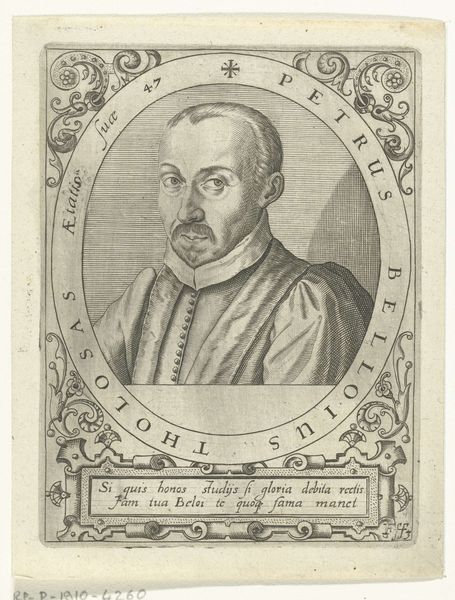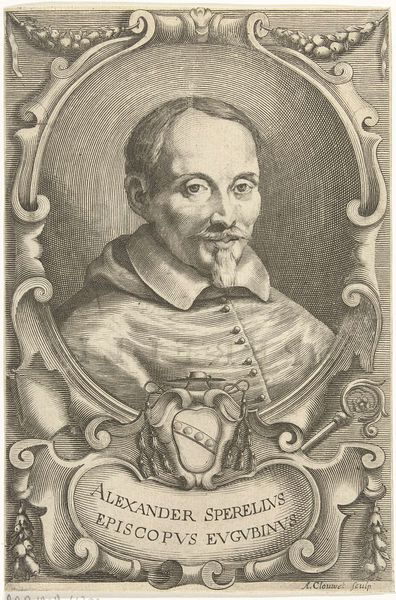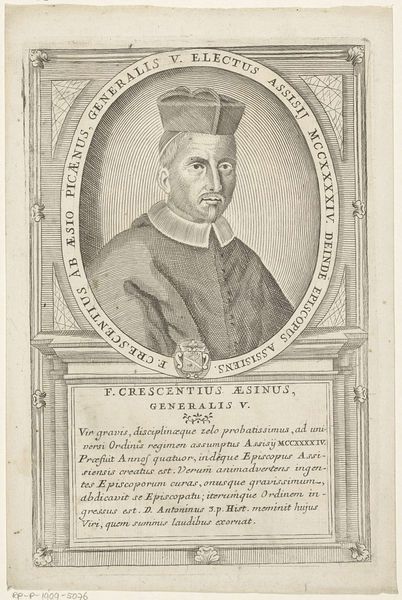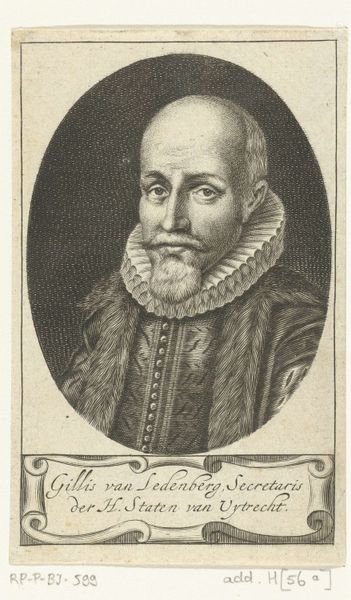
engraving
#
portrait
#
baroque
#
old engraving style
#
caricature
#
portrait drawing
#
history-painting
#
engraving
Dimensions: height 135 mm, width 105 mm
Copyright: Rijks Museum: Open Domain
Editor: This is *Portrait of the Augustinian Joannes Puteanus*, an engraving by Cornelis Galle I from 1636. I'm immediately drawn to the incredible detail in the face – you can see every line and shadow. It feels very serious, but I wonder what’s beyond the surface. What do you see in this piece? Curator: The symbols within this engraving offer insight into cultural memory. The very act of creating and disseminating portraits, especially of religious figures, solidified their place within collective consciousness. Consider the frame itself: it's more than mere decoration. Don't you see how those ornate swirls echo classical motifs? Editor: Yes, I see it. It almost feels like a stage for the portrait, emphasizing its importance. Curator: Exactly! And Puteanus's garb – the habit of the Augustinian order – immediately places him within a specific religious context, instantly recognizable to viewers of the time. It speaks to the values and intellectual pursuits associated with that order. Think of what the book suggests. Editor: It could symbolize his learning and theological background… almost like a visual resume? Curator: Precisely! It speaks volumes about how identity was constructed and communicated in the 17th century. His stern gaze carries a great deal of cultural weight. Are we perhaps meant to measure ourselves against his piety? Editor: That’s fascinating. I never thought about portraits having that level of cultural encoding. It’s more than just a likeness; it’s a whole story! Curator: Indeed! By understanding the symbols and cultural cues, we unlock a richer understanding of the man and the society that venerated him. It highlights the power of visual imagery to carry collective memory forward through generations.
Comments
No comments
Be the first to comment and join the conversation on the ultimate creative platform.


